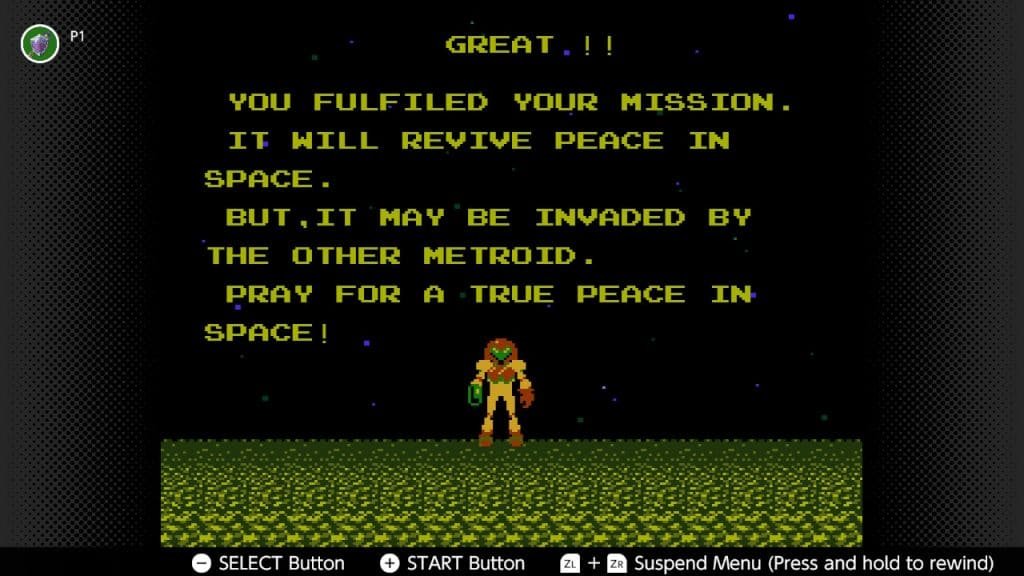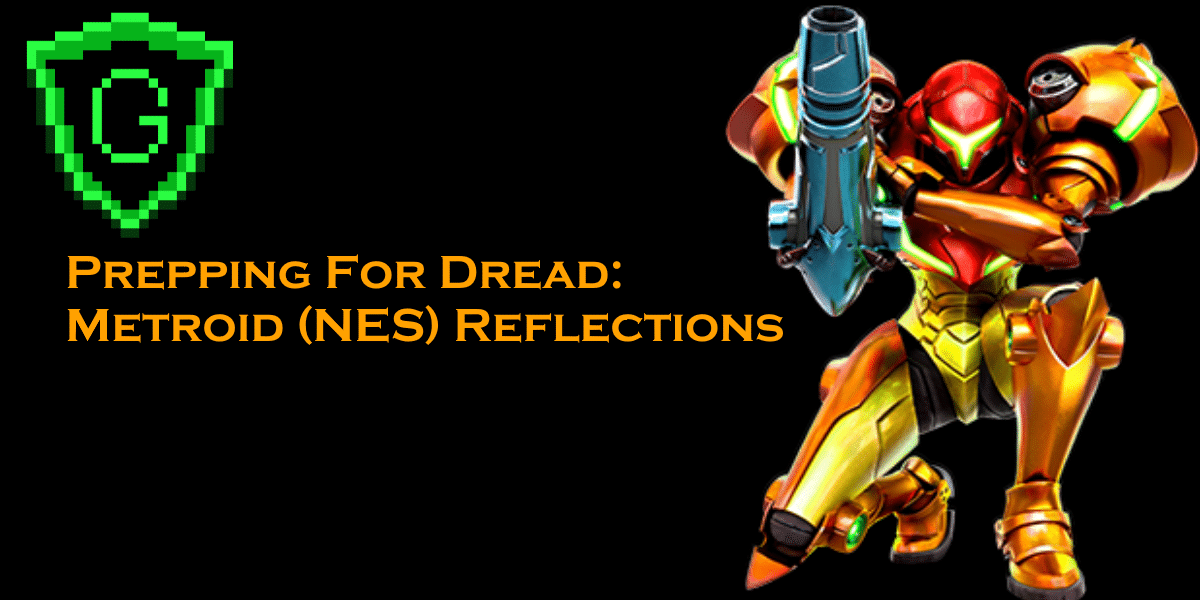There are only weeks to go before the highly anticipated Metroid Dread lands on the Nintendo Switch. I don't know about you, but I can barely contain my excitement! Billed as the follow-up to 2002’s Metroid Fusion. The first entirely new 2D Metroid game since that Game Boy Advance release 19 years ago. Dread is expected to be a phenomenal addition to the franchise.
Could Samus join the ranks of Link or Mario?

Nintendo seems especially intent to elevate the status of Metroid from a niche franchise that peaked with GameCube’s Metroid Prime (also 2002). It was the series’ best-selling game to date with 2.84 million units moved worldwide. Now could it be something that sits alongside its more well-known brands such as Super Mario or The Legend of Zelda?
Okay, no one is really expecting it to reach quite that level. As well, perhaps it’s inaccurate to call a game series ‘niche’ when no less than nine of its entries have sold over a million copies. Even so, these numbers are fairly conservative for Nintendo. For example, Ring Fit Adventure has shipped a whopping 11.26 million units since its 2019 launch. Granted, the Nintendo Switch’s enduring popularity and a global pandemic gave Ring Fit a boost. My only point is that where Nintendo’s most profitable IPs are considered, the heroine of the Metroid games, Samus Aran, has never really gotten her fair due and Nintendo’s recent social media blitz focusing on all things Metroid appears poised to finally change that.
Samus is BACK
Part of this promotion by Nintendo has involved reminding players of Samus’s past outings. On a Twitter thread posted in July, the Kyoto-based company highlighted the original Metroid (1986), Metroid II: Return of Samus (1991), Super Metroid (1994), and the aforementioned Metroid Fusion. As many of the replies were quick to point out, only two Metroid titles are currently playable on the Nintendo Switch. Metroid and Super Metroid via the Nintendo Switch Online NES and SNES libraries, respectively. Limited selections from both retro platforms are included in Nintendo’s online subscription service, which costs about $20 per year; the situation could also be very different by the time you're reading this. Rumors have recently begun heating up about the possibility of Nintendo bringing Game Boy and Game Boy Color games to Switch Online.
Revisiting Metroid (NES) now?
I had run through Super Metroid a couple of years back on my Switch. It was the only 2D Metroid that I’ve actually seen to completion. I found that it still holds up pretty darn well against the many other excellent (and arguably superior) ‘Metroidvanias’ now available on Nintendo’s current hardware. These being both Ori titles and the indie masterpiece, Hollow Knight. However, I still felt an insatiable urge for something Metroid-related, but I don’t own the requisite hardware to play a game like Metroid: Zero Mission (the 2004 Game Boy Advance remake of the original Metroid) or Metroid: Samus Returns (the 2017 3DS remake of Metroid II).
Therefore, I figured now would be as good of a time as any to revisit Samus’s 1986 debut on the Switch’s collection of NES games. I’ve played it before but never for more than a few minutes, and never with an eye on reaching the end credits. This time, I determined, would be different.
So, having now unleashed hell’s fury on Mother Brain and escaped planet Zebes in this old-school classic, how does the original Metroid hold up after all these years?

As it turns out, the core gameplay loop of Metroid remains solid. There are some painful anachronisms, like the fact that the game doesn’t include a map. This makes the inevitable backtracking involved while navigating its tunnels often feel like more of a nuisance than a delight. Thankfully, we live in a day where one can easily pull up a complete overview of Metroid’s passageways. This eliminates much of the irritation that, for me, typically accompanies a so-called ‘Metroidvania’. This being when I have to revisit the same sections for the dozenth time. It’s no surprise to find that enemies re-spawn once you return to a previously explored area. However, on the NES Metroid, the instant you move from one screen to the next (not dissimilar to other classic side-scrollers like Super Mario Bros.), all the foes you will have vanquished only a moment earlier immediately reappear.
That’s not a problem in-of-itself. Both Metroid’s platforming and combat feel tight even by today’s standards. The bigger hassle is that the swarms of enemies you face are not only relentless but fairly punishing. At least near the beginning before Samus has acquired significant upgrades like missiles, energy tanks, and the all-divine Ice Beam and Varia Suit. You’ll often be rewarded with energy balls (i.e. health) when baddies fall. However, it wasn’t uncommon for me to take more damage than I was able to recover while attempting to collect enemy drops.
Am I complaining that Metroid is too difficult?

Well, no, but only because I shamelessly took advantage of Switch Online’s rewind feature! You’d best believe that I probably would have resented the time that I spent with Metroid if I had been forced to play through it the way that gamers first encountered Samus’s epic journey thirty-five years ago.
Does that make me less of a ‘hardcore gamer’? The very embodiment of that soft, weak-willed, modern-day object of scorn? That which certain members of an older generation might hold up as representative of all things wrong with the present state of video games; dumbed down, too easy, and any other nitpick one can point out in a medium that has become increasingly mainstream? Maybe. But I’m a big believer in this ludicrous idea that greater accessibility is a good thing. People should play games in whatever way maximizes the amount of fun that they can get out of them. Crazy, I know!
Hence, I likewise utilized Switch Online’s ‘Suspend Point’ feature, enabling me to save or load my game at any juncture rather than depend on Metroid’s 24-character(!) password system. That would require you to input a long, randomly generated code, revealed upon death, should you wish to continue from the section you left off whenever you initially boot up the game. Yes, I realize all of this largely eliminated the frustrating challenge that Metroid was intended to offer.
The Metroid itch
Despite the insane obstacles that I cowardly avoided, including dozens of game-over screens, I am still able to appreciate the heroic efforts it must have taken to conquer Metroid all those years ago. From before these numerous watered-down, user-friendly updates were supplied for us ‘noobs’!
In all seriousness what was my main purpose for playing through the NES Metroid? At least, aside from finding it to be a therapeutic means of scratching my fever-hot Metroid Dread itch. It was to take a little stroll through memory lane and view this ancient relic of the past as if it were a museum of Metroid lore. To give me even greater esteem for what Nintendo and MercurySteam have in store when Dread launches on October 8th.
To that extent, the playthrough was a resounding pleasure.

How does it hold up?
Sure, the graphics are what you’d expect from an 8-bit Nintendo release from 1986. They’re nothing to write home about yet they still exhibit an incredible amount of character. They epitomize precisely Nintendo’s reputation for all-around, high-quality production. Even when not boasting the latest and best in terms of visual fidelity. They've been near flawlessly consistent across four decades. The music too, which will be familiar to fans of the series, may suffer from all the simplicity of low-fi, retro-sounding tunes that people nowadays might struggle to muster any deep emotional reaction towards, and yet I think it still bangs.
And then there was happening upon classic series’ villains like Kraid and Ridley in their very first video game appearance. Ah, I just wanted to squeeze them! They… wanted to kill me. And they did, repeatedly.
All in all, I really can’t say that Metroid holds up as an amazing game in 2021 the way that I can more confidently vouch for Super Metroid. It’s a title that shines brightly in many areas but feels far too antiquated in others. Marking it squarely as a period piece, a product of its age, albeit one that most certainly was groundbreaking for its time. That said, I’d easily recommend it to anyone who has yet to experience Samus’s introduction to the world or simply wishes to get a more bird’s-eye-view on how the franchise has evolved between its primordial conception and the latest, flashy, 2.5D mechanics promised by Dread.
It was, even given my criticisms (and shortcuts), surprisingly fun from start to finish. Particularly once I began discovering ever-so-helpful enhancements to Samus’s abilities.
The Ending
Oh, and about the ending? I can’t conclude without a word about that. As basically everyone knows by now, the big reveal at the end of Metroid is that the protagonist, Samus, is not the man Nintendo had hyped him up to be. (The original instruction manual, which can be downloaded here, is worth a read, especially for how it deals with this secret surprise).
Spoiler alert! Samus is a woman! Except nobody who originally beat Metroid would know that unless they finished the game in under five hours. I didn’t accomplish that feat so I never actually got to witness the grand revelation for myself. Indeed, I was a bit let down. The quicker you manage to reach the ending, the more clothes Samus loses when her true gender is finally revealed. If you beat the game in under an hour, you see her stripped down to a bathing suit. It kind of seems hard to imagine Nintendo getting away with something like this today. Then again, I’m talking about the same company that published Xenoblade Chronicles II and reportedly pressed PlatinumGames to give Bayonetta a ‘sexier Link costume.’
I guess you can never really know what’s going on in those ‘hentai’ minds over at the House of Mario!
Anyway, Metroid! Decent game! Dread! I can’t wait!



[…] Then, last month, I dove into the original Metroid in preparation for Dread. It wasn’t my first excursion into the 1986 classic but it was my first serious attempt at running through the game from start to finish. I wrote about that experience for some of my ‘geeky’ friends here. […]